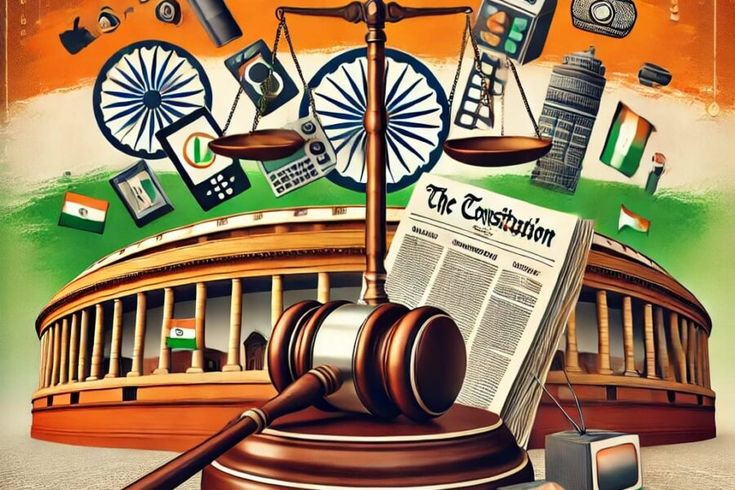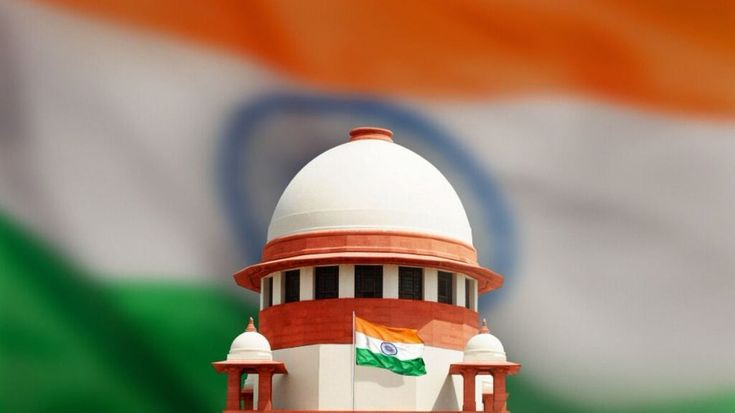The Need for Limiting Constitutional Amendments
The Indian Constitution is often described as a living document, capable of growth and adaptation with time. However, to prevent its core values from being distorted, the judiciary evolved the Basic Structure Theory — a doctrine that safeguards the foundational framework of the Constitution from being altered or destroyed by amendments.
Article 368 of the Constitution empowers Parliament to amend the Constitution. Yet, the question arose — can Parliament change anything and everything, even the essential features like democracy, secularism, and judicial review? This debate led to the birth of the Basic Structure Doctrine, which balances Parliamentary sovereignty with constitutional supremacy.
This doctrine is not explicitly mentioned in the Constitution but was evolved through judicial interpretation, ensuring that the spirit of the Constitution remains intact, even if its provisions evolve over time.
Early Judicial View: Unrestricted Amending Power (1951–1967)
The controversy over Parliament’s amending power began soon after Independence. In Shankari Prasad v. Union of India (1951), the Supreme Court upheld the First Amendment, ruling that “law” in Article 13(2) does not include constitutional amendments. Therefore, Parliament could amend Fundamental Rights under Article 368.
This view was reaffirmed in Sajjan Singh v. State of Rajasthan (1965), where the Court again upheld Parliament’s power to amend any part of the Constitution, including Part III (Fundamental Rights). However, Justice Mudholkar and Justice Hidayatullah expressed early doubts, observing that there might be some implied limitations on the amending power — planting the seeds of the Basic Structure Doctrine.
A major shift occurred in I.C. Golaknath v. State of Punjab (1967). The Supreme Court, by a narrow majority, held that Fundamental Rights cannot be amended. It interpreted the word “law” in Article 13 to include constitutional amendments, thus making any amendment violating Fundamental Rights unconstitutional. This judgment curtailed Parliament’s powers, creating political friction.
In response, Parliament passed the 24th Amendment (1971), explicitly granting itself power to amend any provision, including Fundamental Rights, and making it mandatory for the President to give assent to such bills. This set the stage for a historic judicial confrontation in Kesavananda Bharati v. State of Kerala (1973).
The Turning Point: Kesavananda Bharati Case (1973)
The Kesavananda Bharati case is the cornerstone of India’s constitutional jurisprudence. In this case, the petitioner, the head of a religious mutt, challenged the Kerala Land Reforms Act, along with the 24th, 25th, and 29th Amendments, arguing they violated his Fundamental Rights.
A 13-judge bench — the largest in Indian history — heard the case. In a 7:6 majority judgment, the Supreme Court held that Parliament has the power to amend the Constitution, but cannot destroy its basic structure or essential features.
Chief Justice S.M. Sikri and other judges identified elements that form part of the basic structure, such as:
- Supremacy of the Constitution
- Rule of Law
- Separation of Powers
- Judicial Review
- Federal Character
- Secularism and Democracy
- Unity and Integrity of the Nation
The judgment thus introduced the Basic Structure Doctrine, ensuring that amendments cannot alter the essential framework of the Constitution. It struck a balance between constitutional flexibility and stability, preventing any ruling majority from undermining the core values of Indian democracy.
Post-Kesavananda Developments: Strengthening the Doctrine
After Kesavananda Bharati, several landmark judgments reaffirmed and expanded the scope of the Basic Structure Doctrine.
In Indira Nehru Gandhi v. Raj Narain (1975), the Court struck down Clause (4) of the 39th Amendment, which attempted to make the Prime Minister’s election beyond judicial review. The Court ruled that free and fair elections and judicial review are basic features of the Constitution.
In Minerva Mills v. Union of India (1980), the Court invalidated parts of the 42nd Amendment, which gave Parliament unlimited power to amend the Constitution. The Court held that harmony between Fundamental Rights (Part III) and Directive Principles (Part IV) is part of the basic structure. It emphasized that limited amending power itself is a basic feature.
Further, in Waman Rao v. Union of India (1981), the Supreme Court clarified that amendments made before 24 April 1973 (Kesavananda decision) cannot be challenged, but amendments made after that date must pass the basic structure test.
Later, in S.R. Bommai v. Union of India (1994), the Court ruled that federalism and secularism are integral to the basic structure, ensuring that Article 356 (President’s Rule) cannot be misused arbitrarily.
Finally, in I.R. Coelho v. State of Tamil Nadu (2007), the Supreme Court held that even laws placed under the Ninth Schedule after 1973 can be reviewed if they violate the basic structure.
These judgments cemented the doctrine’s role as a constitutional safeguard against authoritarian amendments.
Modern Implications and Continuing Relevance
The Basic Structure Doctrine continues to serve as a judicial safeguard against the abuse of amending powers. It ensures that Parliament cannot dilute the essential features that define India as a sovereign, democratic, secular, and republican State.
The doctrine was reaffirmed in the NJAC Case (Supreme Court Advocates-on-Record Association v. Union of India, 2015), where the Supreme Court struck down the 99th Constitutional Amendment and the National Judicial Appointments Commission (NJAC) Act. The Court ruled that judicial independence is a part of the basic structure, and any amendment affecting it is unconstitutional.
Thus, the Basic Structure Theory is not static — it evolves through judicial interpretation. It protects India’s constitutional identity, ensuring that while the document remains adaptable to change, its foundational values — democracy, liberty, equality, secularism, and the rule of law — remain untouchable.
Real-Time Example
A practical example of the Basic Structure Doctrine in action is the striking down of the NJAC Act (2015). The Act sought to replace the collegium system of appointing judges with a commission that included members from the executive. The Supreme Court declared the Act unconstitutional, holding that judicial independence is part of the basic structure and cannot be compromised by political influence.
This judgment reaffirmed the Court’s role as the guardian of the Constitution, ensuring that any attempt to undermine the autonomy of the judiciary or the separation of powers would be struck down as unconstitutional.
Mnemonic to Remember – “BASIC INDIA”
To easily remember the evolution of the Basic Structure Doctrine, use the mnemonic “BASIC INDIA”:
- B – Birth of Doctrine: Kesavananda Bharati (1973)
- A – Amending Power Limited: Article 368 restricted by judiciary
- S – Shankari Prasad & Sajjan Singh: Early view of full power
- I – I.C. Golaknath: Parliament cannot amend Fundamental Rights
- C – Core Features Identified: Democracy, Secularism, Rule of Law
- I – Indira Gandhi Case: Free elections, judicial review protected
- N – Ninth Schedule Review: I.R. Coelho (2007)
- D – Doctrine Strengthened: Minerva Mills (1980)
- I – Independence of Judiciary: NJAC Case (2015)
- A – Amending Power Balanced with Constitutional Supremacy
Mnemonic Meaning: “BASIC INDIA” = Birth, Amendment limits, Shankari-Golaknath, Identified core features, Indira case, Ninth Schedule, Doctrine strengthened, Independence of Judiciary, Amendment balance.
About lawgnan
Explore the Basic Structure Doctrine and the Need for Limiting Constitutional Amendments at Lawgnan.in. Understand how Article 368 empowers Parliament to amend the Constitution, but not to destroy its core features like democracy, secularism, and judicial review. Learn through landmark cases — Kesavananda Bharati (1973), Minerva Mills (1980), Indira Gandhi (1975), and NJAC (2015) — that define the limits of constitutional change. Perfect for law students, judiciary aspirants, and UPSC candidates, this article simplifies complex constitutional principles. Visit Lawgnan to master the foundation of constitutional supremacy and judicial protection in India.



